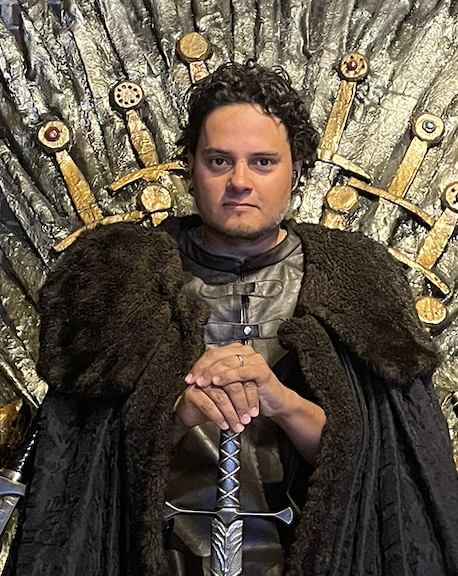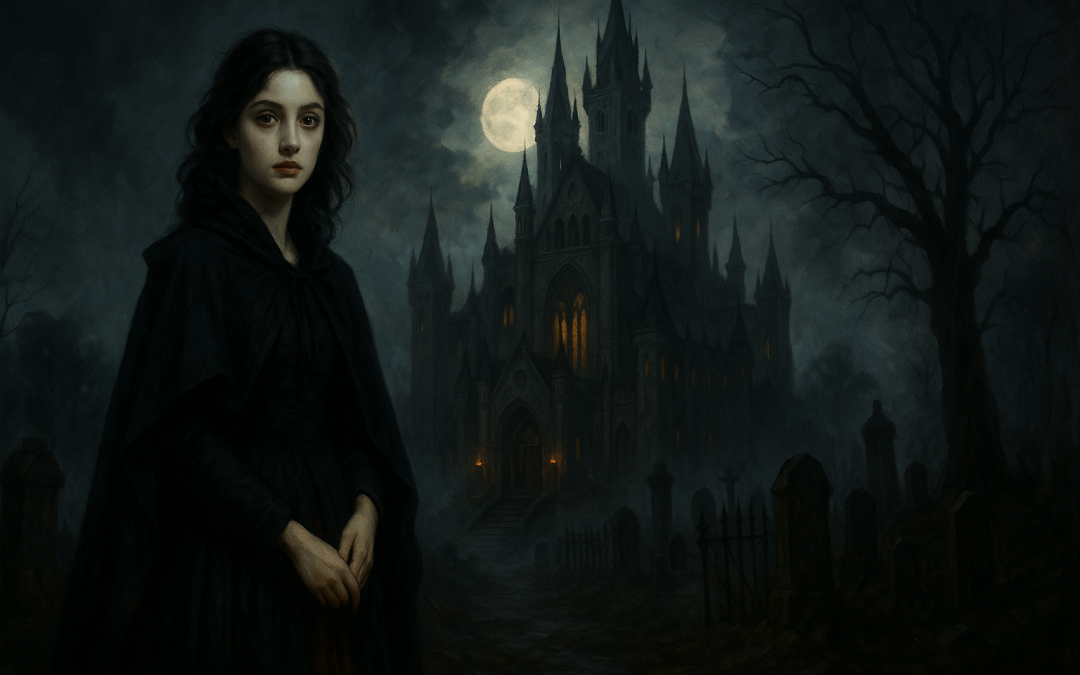Gothic literature emerged in 18th-century England with a taste for the eerie, the sublime, and the supernatural. That legacy has never fully faded. Its spirit still lingers in many of today’s fantasy novels, especially in urban fantasy.
Every time a wizard detective chases a vampire through rain-slicked alleys or an ancient curse resurfaces in a modern city, the Gothic tradition whispers through the pages.
This article explores how English Gothic literature began and how it continues to shape the worlds of contemporary fantasy.
A Quick Tour Through the Gothic’s Beginnings
The word “Gothic” was originally used to describe things associated with the medieval period. At first, it carried a sense of the crude or barbaric, especially in contrast to Enlightenment ideals.
That changed in 1764, when Horace Walpole published The Castle of Otranto and subtitled it “A Gothic Story.” His tale of supernatural events and crumbling castles launched an entire genre.
Writers like Ann Radcliffe added suspense and psychological tension. Mary Shelley gave the genre emotional and philosophical depth with Frankenstein in 1818. By the late 19th century, stories such as Dracula by Bram Stoker and Strange Case of Dr. Jekyll and Mr. Hyde by Robert Louis Stevenson had moved Gothic horror into urban settings. These novels introduced creatures of the night into modern life and portrayed cities as places where repressed fears and hidden dangers come to the surface.
Echoes of the Past in Modern Fantasy
Urban fantasy carries many of the same obsessions found in Gothic literature. One of the strongest is the idea that the past never disappears. Old sins, forgotten histories, and buried secrets continue to shape the present. In Neverwhere by Neil Gaiman, the hero falls into London Below after helping a girl named Door whose family was murdered. The mystery of her past drives the entire narrative.
Characters in urban fantasy often carry emotional wounds or personal tragedies. These inner shadows reflect a Gothic focus on psychological depth. In the Dresden Files, Harry Dresden is constantly reckoning with his mistakes and the ghosts of his past. The Gothic fascination with memory, guilt, and fate resurfaces in these modern tales, even when the setting looks like a contemporary city.
A Change of Scenery, Not of Mood
Classic Gothic stories used castles, abbeys, and ruins as their stages. These places were filled with hidden rooms and long-forgotten corridors. Today, urban fantasy finds those same qualities in cities. The modern alleyway replaces the castle hallway. Derelict warehouses and subway tunnels become the haunted spaces where strange things dwell.
In Neverwhere, London becomes a labyrinth of lost stations, secret markets, and ancient powers hiding beneath everyday life. In The Dresden Files, Chicago’s backstreets, graveyards, and condemned buildings are the battlegrounds for supernatural conflict. The shift in setting does not break from the Gothic atmosphere. It only updates it.
Many urban fantasy stories also tap into the beauty of decay. Cracked neon signs, crumbling apartment blocks, and abandoned districts carry the same melancholy weight as the moss-covered ruins of earlier fiction. Cities in these stories often feel alive, but not entirely safe. They hold memories in concrete and rust.
Monsters, Morality, and Dual Lives
The Gothic tradition gave us some of the most enduring monsters in literature. Vampires, werewolves, ghosts, and creatures shaped by science or magic filled its pages. These beings were often symbols of human desires, fears, or inner conflicts. Dr. Jekyll and Mr. Hyde captured the duality of man in one body. Dracula was both seductive and deadly, cultured and feral.
Urban fantasy inherits this fascination. Its vampires may run nightclubs or navigate modern politics, but they still reflect questions about power, mortality, and the self. Protagonists are often hybrids, detectives who moonlight as demon hunters or shapeshifters struggling to live among humans. Moral ambiguity lies at the heart of many of these stories. Characters fight to hold onto their humanity while wrestling with darker impulses.
This duality plays out in both personality and plot. Someone who looks normal by day may become a predator by night. The same barista who serves coffee might also serve as a messenger for ancient fae courts. These contrasts invite readers to question what lies beneath appearances and how identity forms across different roles.
The Uncanny in the Everyday
One of the Gothic’s signature qualities is the uncanny. This sensation arises when something feels both familiar and alien. A hallway looks normal until the lights flicker. A portrait seems to watch. A dream overlaps with waking life.
Urban fantasy excels at creating this feeling. It places magic just under the surface of the real world. A hidden door might open into another dimension. An old map might reveal secret routes only accessible at twilight. The ordinary becomes a mask for something much stranger.
In Gaiman’s work, real locations like London Underground stations gain new meaning. Forgotten places become entry points to magical realms. These stories suggest that another world could be waiting beneath the one we know, if only we noticed the signs.
Why the Gothic Endures in Fantasy
Gothic literature thrives on mystery, danger, and emotion. It explores what people fear and desire, what they suppress and what haunts them. These themes remain powerful in modern fiction. Urban fantasy, with its mix of myth, horror, and city grit, keeps that spirit alive.
Authors like Neil Gaiman and Jim Butcher bring Gothic moods into contemporary spaces. They write about loss, isolation, transformation, and resistance. Their stories remind us that magic often hides in plain sight and that darkness is not always something to be destroyed. Sometimes, it asks to be understood.
The Gothic tradition did not vanish with time. It moved into new homes. Today, those homes have postcodes, streetlights, and subway lines. But they remain full of shadows, secrets, and strange beauty, the same elements that drew readers into ruined castles centuries ago.

D.P. Martinez is a contemporary fantasy author specialising in urban fantasy and magical realism. He holds an M.A. in English Literature from the University of Greenwich, where he focused on Literary London. His research explored metaphorical representations of London in urban fantasy. He has written hundreds of articles and several books across both fiction and non-fiction.

